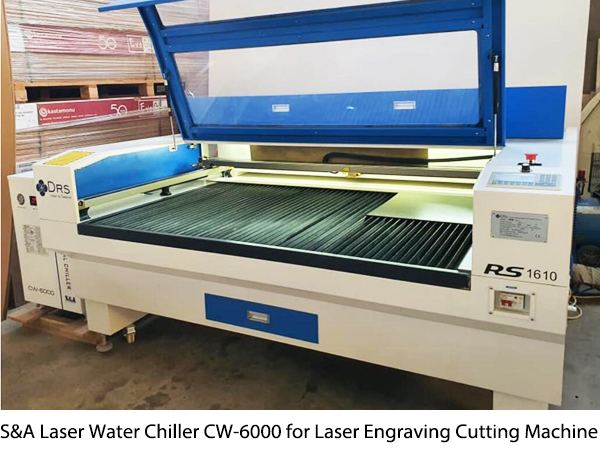![Teyu Industrial Water Chillers Annual Sales Volume]()
Laser engraving is a novel printing method in the recent years. When it comes to printing, most of us will think about paper printing, on both sides of the paper. However, there is a new technique. And that is laser engraving and it has immersed into our daily life.
Laser engraving machine can work on many different kinds of materials, including paper, hardboard, thin metal, acrylic board, etc.. But where does the pattern come from? Well, it's easy and they are from the computer. Users can design their own patterns on the computer via certain kinds of software and they can change the specification, pixel and other parameters too.
The design software and the laser engraving machine are connected to each other. That is to say, what is on the computer is what we get in the laser engraving process. What makes people even amazed is that laser engraving machine has a very fast printing speed and users can control the height and width of the pattern. Therefore, laser engraving machine is a new technology that combines modern printing and computer-controlled system.
Nowadays in the market, there are already many laser engraved works, such as laser engraved photo. Most of the laser engraved photos are made from wood and they are mostly used as gifts between friends or families.
Not just wood is the ideal laser engraved material. Stainless steel bottle and glass bottle are also the popular ones. Using laser engraving machine on those materials are much faster than traditional engraving. Just a laser engraving machine and a computer can make the engraving job done.
However, not just anyone can operate the laser engraving machine. People needs to be trained for basic skills and then operate the machine. But those kinds of basic skills are easy to learn, so people who want to open their own laser engraving shops don't need to worry so much.
There is another big advantage of laser engraving - environmental friendly. Laser engraving machine won't produce any pollution and requires no consumables. This can greatly reduce the operating cost. Plus, it can work 24/7, reducing lots of human labor cost.
Based on different laser sources, laser engraving machines are generally divided into fiber laser engraving machine and CO2 laser engraving machine. Both of these two types of laser engraving machines require cooling device to help bring down the temperature of their laser respective laser sources. But their cooling methods are different. For fiber laser engraving machine, since the fiber laser used is generally very low-powered, air cooling is sufficient to take away the heat. However, for CO2 laser engraving machine, since the CO2 laser used is much bigger, water cooling is often the consideration. By water cooling, we often refers to CO2 laser chiller. TEYU CW series CO2 laser chillers are suitable for cooling CO2 laser engraving machines of different powers and offer different temperature stability, including ±0.3℃, ±0.1℃ and ±1℃.
![TEYU CO2 Laser Chillers]()












































































































